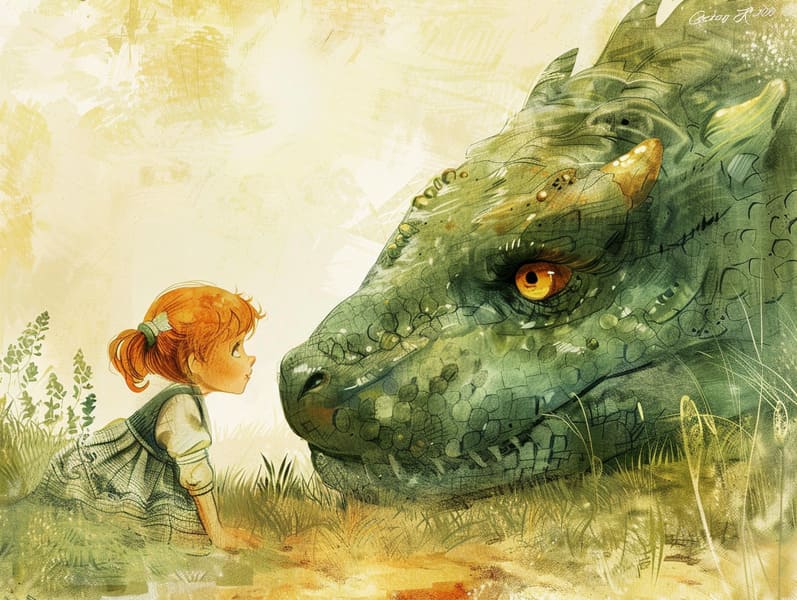Uncovering the Past of Bedtime Fairy Tales and the Unchanging Wonder.
Uncovering the Past of Bedtime Fairy Tales and the Unchanging Wonder.
Blog Article

Grimm's fairy tales have long histories. These tales have been spoken from one generation to the next long before they were ever inscribed. They emerged from a variety of societies, including Middle Eastern traditions. They were initially narrated among grown-ups, often carrying themes and messages concerning the societal norms and beliefs of the time.
The Grimm brothers, Jacob and Wilhelm (the Grimm brothers), were among the first to compile many of these beloved stories. Their volume, "Grimm's Children's Stories," included tales like "Cinderella," "Hansel and Gretel," and "Little Snow White," which have since become staples in the world of traditional fairy tales. Similarly, Andersen's whimsical tales, such as "The Sea Maid," and "The Little Duckling," have captured hearts worldwide, establishing their place in the pantheon of iconic fairy tales.
Despite being ancient, these tales remain as meaningful as ever, especially as nighttime stories for kids. These whimsical stories are now available in diverse formats, including vividly illustrated books, enchanting animations, and online storybooks.
Their persistent charm can be ascribed to several whimsical characteristics:
Valuable Lessons: Timeless fairy tales often provide important moral lessons. Fairy tales like "The Tale of the Boy Who Cried Wolf" teach the virtue of being truthful, while "The Story of the Tortoise and the Hare" stress the traits of resolve and humility. These narratives offer little ones clear distinctions between virtue and vice, forming their moral compass in a soft yet significant way.
Compassion and Insight: Timeless fairy tales frequently depict heroes facing difficulties and adversities, inciting kids to empathize with their struggles and cheer for their triumphs. For instance, "Beauty's Beast" reveals the benefit of looking past the exterior to see the true essence of a character, cultivating warmth and comprehension.
Cultural Awareness: Many classic fairy tales are deeply ingrained in the cultural contexts from which they bloomed. Understanding these narratives can provide captivating looks into different historical contexts, building a sense of world awareness and appreciation.
Inventiveness and Fantasy: The magical elements in traditional fairy tales—magical spells—fuel children’s visions and dreams. These narratives lead readers to enchanted realms, firing up inventive dreams and a sense of excitement that continues a lifetime.
Timeless fairy tales are not only captivating but also get more info teaching. They serve as captivating tools in nurturing various thinking and feeling skills in young readers. When fairy tales are narrated, they improve language acquisition by showing new language and elaborate sentence structures. This practice also nurtures hearing perception and attentiveness, as young readers stay focused, looking forward to see what happens next.
Furthermore, conversing about the themes and characters of ancient fairy tales can cultivate reasoning skills and intellectual skills. Little ones are led to see patterns, foresee events, and get cause and effect. These deliberations also help little ones articulate their thoughts and feelings, contributing to their emotional intelligence.
In today’s online age, the abundance of web-based fairy tales has made these tales more acquirable than ever. Online resources and applications supply comprehensive collections of Grimm's fairy tales that can be viewed or listened on anytime, anywhere. Fairy tales read aloud are particularly favored, providing an charming way for the young to experience these enchanting tales. Voice books and read-to-me videos bring characters and settings to life, often supported by entrancing music and musical scores that amplify the story journey.
The timeless allure of old fairy tales lies in their ability to evolve to current eras while sustaining their main lessons. Contemporary renditions of these stories often showcase more different characters and modern settings, making them understandable to today’s audience. However, the main ideas of valour, goodness, and lawfulness remain unchanged, continuing to resonate with audiences of all ages.
Old fairy tales also offer a sense of solace and knownness. They make accessible a tidy narrative with a evident beginning, middle, and end, often finishing with the conclusion of conflicts and the triumph of honesty over deceit. This regularity can be heartening for the young, affording a sense of consistency in an unpredictable world.
Ancient fairy tales continue to charm and educate new generations, maintaining their splendor and impact in modern society. As kids' bedtime tales, they grant access to a perfect blend of charm and enlightenment, enriching moral values, empathy, and creativity. The prevalence of web-based fairy tales and the widespread nature of fairy tales read out loud affirm that these ancient fairy tales remain obtainable to new generations.
By keeping and narrating these fairy tales, we continue to admire the rich tapestry of legends and cultural heritage. Whether you are experiencing a richly illustrated book, perusing a digital collection, or listening through an narrated book, the magic of classic fairy tales is always within reach. These tales show us of the ageless impact of storytelling and its ability to link us across time and space.
Even if you are delving into a gorgeously illustrated book, viewing a web collection, or hearing an audiobook, the enchantment of traditional fairy tales is always within reach.
These fairy tales emphasize of the invariable effect of stories and its ability to unite us across generations and cultures, forging a link that delights and instructs alike.